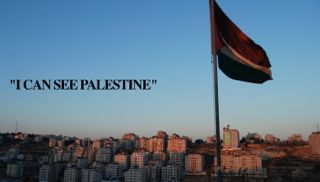Introduction
The health sector in the Gaza Strip has been severely affected by the prolonged closure of Gaza’s borders and by the Israeli military operation at the turn of the year. In February 2009, WHO together with health cluster partners, published an initial assessment of health needs in Gaza following the Gaza war. In March a WHO Specialised Health Mission, commissioned by the WHO Executive Board, visited Gaza to assess health and humanitarian needs following the Israeli military operations. Their report was presented to the World Health Assembly in May.
The purpose of this report by WHO and the health cluster, is to provide an up-to date overview of the situation in the health sector six months after the end of the Israeli military operation. It focuses on the functioning of health services and on the health status of the population. As with all such reports, it is subject to the limitations of the data which is available.
Health Services
Most health services have been functioning normally since the end of hostilities. All primary health care facilities (PHC), except for two centres which were completely destroyed and relocated to a new building, resumed regular working hours after the ceasefire on January 18th, 2009, providing essential PHC services that include vaccination, antenatal care, chronic disease management, general medical consultations for children and adults, as well as PHC diagnostic services and dental care. The public health program activities have resumed as well, but with the pre-existing limitations. Hospital services including outpatient departments, elective surgical operations and inpatient admissions also resumed and activity levels have matched or exceeded those for the same period last year.
Health care facilities
Structural damage to the hospitals and PHC facilities has not been adequately addressed due to the lack of construction materials. Minor repairs and very basic reconstruction, such as window replacement, has taken place using the resources currently available. For most PHC facilities, this has been sufficient to repair the damage that occurred. The main affected hospital was Al-Quds Hospital but the patient care 2 services provided by the facility have fully resumed. From the two totally destroyed PHC centres, the MoH relocated to different buildings. Islamic Relief is planning reconstruction of 10 of the most affected PHC facilities and the Qatarian government has also promised funds for rehabilitation.
Medical Supplies and logistics
An estimated 4,600 tons of donated medical supplies and equipment entered into the Gaza Strip during and immediately after the conflict, creating enormous logistical challenges for the MoH Central Drug Store. WHO, in cooperation with other organizations such as MAP UK, Islamic Relief, and the ICRC provided logistical support to the CDS to facilitate the sorting, storage, and distribution of these donated items. This included the funding of pharmaceutical staff and labourers, over 7,000m² of warehouse space, as well as warehouse transportation and IT equipment. An inventory process was initiated simultaneously in order to develop a more accurate picture of current and future needs. Unfortunately, the donation stocks have had only a moderate impact on pre-existing supply shortages due to a widespread problem of short expiry dates, the preponderance of non-essential items, and a lack of variety in the items sent. In the latter case, a narrow list of emergency and primary care items were donated in large quantities at the expense of items for specialized care. In total, the CDS received estimated 300-350 items out of the 480 items on the MoH essential drug list. Although there is a one year supply for approximately 100 of these items, the rest of the items will cover needs for much shorter periods. As of July 2009, approximately 16 - 20% of essential items are out of stock for the Drug and Disposable Stores respectively. Although supplies have been arriving from the West Bank, the quantities and variety of items sent have been insufficient to significantly address current shortages. Furthermore, many of the out of stock items in Gaza are also out of stock in the West Bank. Without re-supply, the Drug Store expects to have an estimated 140 items out of stock by September 2009.
| Attachment | Size |
|---|---|
| Click to download the full report | 110.39 KB |
World Health Organization - June 29, 2009 - Back to Resources Page
Did we miss something?
Click here to suggest a state building resource to be added to our fast-growing archive!
















